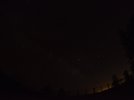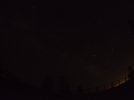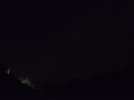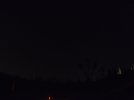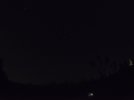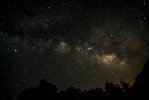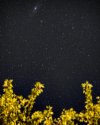You are using an out of date browser. It may not display this or other websites correctly.
You should upgrade or use an alternative browser.
You should upgrade or use an alternative browser.
Night Sky Long Exposure Pictures
- Thread starter Dudenow12
- Start date
- Joined
- Jan 27, 2013
- Messages
- 52,470
- Reaction score
- 30,340
- Location
- Sydney, Australia ~ Shenzhen, China
- Country
- Australia
- Dash Cam
- Too many ¯\_(ツ)_/¯
Can anyone tell me what settings to use to take a long exposure picture of the night sky to see stars? Thanks in advance!
not sure if he has that model but @Nigel has taken a lot of those types of photos with really nice results and might be able to offer you some tips
Nigel
Well-Known Member
- Joined
- Jul 7, 2014
- Messages
- 16,804
- Reaction score
- 8,773
- Location
- Wales
- Country
- United Kingdom
- Dash Cam
- Gitup F1+G3ꞈꞈꞈꞈꞈ Viofo A229ꞈꞈꞈꞈꞈ Blueskysea B4K
No, I don't have an SJ7. I think it is the same sensor as the Gitup Git3 though, so should be able to do a nice job if the necessary settings are available. The SJ6 seems to have copied the exposure settings available on the Git2 so I guess the SJ7 has them too.not sure if he has that model but @Nigel has taken a lot of those types of photos with really nice results and might be able to offer you some tips
A good starting point is:
Exposure time - 60 seconds
ISO - 800
White Balance - Sunshine
Sharpening - None
If you live somewhere with light pollution then you may need to reduce the exposure time, if you live somewhere with very dark sky then you can extend the exposure. At 60 seconds. ISO 1600 without light pollution you should just be able to pick up the milky way galaxy, image quality will reduce a little if you go to ISO 1600 though.
If you have a lot of light pollution from orange sodium street lamps then you may want to set the White Balance to Tungsten to turn the light pollution white.
Remember that there is more than just stars up there, this is the International Space Station passing a weather satellite taken with the Gitup Git2:

And a thunder storm taken with the Gitup Git2:
Nigel
Well-Known Member
- Joined
- Jul 7, 2014
- Messages
- 16,804
- Reaction score
- 8,773
- Location
- Wales
- Country
- United Kingdom
- Dash Cam
- Gitup F1+G3ꞈꞈꞈꞈꞈ Viofo A229ꞈꞈꞈꞈꞈ Blueskysea B4K
The SJ6 has a "Photolapse" mode that includes shutter speed and ISO settings, I guess the SJ7 has too?Thanks for the tips @Nigel! I'll have to try to take a drive to the mountains away from the light pollution so I can get some cool shots.
Not sure if this is possible in the SJ7 yet, but a nightlapse feature would be awesome too.
Choose the shortest interval available between photos, eg 3 seconds interval and 60 seconds exposure with ISO 1600 and post a photo here so we can see how it compares to the Gitup Git2:
Milky Way:

Orion in dark skies (ISO 800):

The Plough and a moonrise chasing Jupiter with trees illuminated by flash gun:

- Joined
- Aug 11, 2015
- Messages
- 1,867
- Reaction score
- 485
- Country
- China
Yes, SJ7 has video and photo lapse.The SJ6 has a "Photolapse" mode that includes shutter speed and ISO settings, I guess the SJ7 has too?
Choose the shortest interval available between photos, eg 3 seconds interval and 60 seconds exposure with ISO 1600 and post a photo here so we can see how it compares to the Gitup Git2:
Milky Way:

Orion in dark skies (ISO 800):

The Plough and a moonrise chasing Jupiter with trees illuminated by flash gun:

I took a little trip to the mountains to try taking some pictures and got some pictures of the stars but there's still lots of room for improvement in my night sky photo taking skills. lol I only did 800 ISO with 30 second exposure. I should have gone with 60 seconds since there was so little light pollution. This next weekend I'm going camping so I'll try to play around with the settings more and get some better pictures.
I did find a glitch in time lapse photo + long exposure. I had the long exposure on at 30 seconds but I was still able to select time lapse photo intervals less than 30 seconds and that would cause the camera to go into an endless loop and the only way I could stop it was by removing the battery. If you've selected long exposure you shouldn't be able to select time lapse photo intervals that are less than the exposure time.
I did find a glitch in time lapse photo + long exposure. I had the long exposure on at 30 seconds but I was still able to select time lapse photo intervals less than 30 seconds and that would cause the camera to go into an endless loop and the only way I could stop it was by removing the battery. If you've selected long exposure you shouldn't be able to select time lapse photo intervals that are less than the exposure time.
All of these were done with just 30 second exposure time and 800 ISO.
2 Different locations, first one was at a vista point along the road up the mountain and the yellow glow you can see is the city in the distance, second location was a lake and there were just a few lights on the water but the sky was very dark.
If I would have increased the ISO and exposure time you'd see the milky way really clearly. You can see it's haze in some of the pictures.
2 Different locations, first one was at a vista point along the road up the mountain and the yellow glow you can see is the city in the distance, second location was a lake and there were just a few lights on the water but the sky was very dark.
If I would have increased the ISO and exposure time you'd see the milky way really clearly. You can see it's haze in some of the pictures.
Attachments
Nigel
Well-Known Member
- Joined
- Jul 7, 2014
- Messages
- 16,804
- Reaction score
- 8,773
- Location
- Wales
- Country
- United Kingdom
- Dash Cam
- Gitup F1+G3ꞈꞈꞈꞈꞈ Viofo A229ꞈꞈꞈꞈꞈ Blueskysea B4K
Those seem really dark for ISO 800 30 seconds, they also seem a bit blurred, but you are on the right track.All of these were done with just 30 second exposure time and 800 ISO.
2 Different locations, first one was at a vista point along the road up the mountain and the yellow glow you can see is the city in the distance, second location was a lake and there were just a few lights on the water but the sky was very dark.
If I would have increased the ISO and exposure time you'd see the milky way really clearly. You can see it's haze in some of the pictures.
Try the maximum ISO next, and some with 1 minute exposure. But you will start to get star trails at 1 minute rather than increasing brightness. Pointing north will minimise the star trails.
You do need a solid tripod, and not one mounted on car springs and rubber tyres, maybe the blurriness comes from the mount moving?
Always take a range of exposures, some of them might work, doesn't matter if many don't! Also, a photo editor can help adjust brightness etc to make them more presentable.
kamkar
Well-Known Member
- Joined
- Oct 11, 2013
- Messages
- 34,286
- Reaction score
- 18,897
- Country
- Denmark
- Dash Cam
- 10 years, many dashcams
maybe blur come from pressing button, i use self timer on my Nikon as i dont want to be touching camera on tripod under long exposures.
Dont know if this is possible with the SJ7, i wasent even aware you could get into exposure timing in photo mode.
Just had the shortest night in 2017 and it dont really get that dark up here, allways seem to be a glow at the horizon.
I have been even further north in summer, and it is indeed freaky it never get so dark at night you cant tie a new fly on your fishing line without the aid of light.
Dont know if this is possible with the SJ7, i wasent even aware you could get into exposure timing in photo mode.
Just had the shortest night in 2017 and it dont really get that dark up here, allways seem to be a glow at the horizon.
I have been even further north in summer, and it is indeed freaky it never get so dark at night you cant tie a new fly on your fishing line without the aid of light.
flip9
Well-Known Member
- Joined
- May 17, 2015
- Messages
- 453
- Reaction score
- 429
- Country
- Australia
- Dash Cam
- F770, SG9665GC
Do you have a timer delay before it takes the shot? Pressing the button introduces a lot of shaking, you need to let the rig stabilize for at least 5 seconds before the cam takes the shot.
You can only get half of the milkyway from your latitude and Scorpio is already near the horizon in your pics. Ideally the target should as high above as possible.
Another thing you can try is star trails, which involves stacking multiple images together

You can only get half of the milkyway from your latitude and Scorpio is already near the horizon in your pics. Ideally the target should as high above as possible.
Another thing you can try is star trails, which involves stacking multiple images together

Thanks for all of the tips! Can't wait to get some more pictures this weekend.
The blur came from me moving the tripod or pressing the shutter button. After a while I started taking the pictures on a 60 second time-lapse interval and also have a remote so I'll just stick to those methods next time and hopefully there wont be any blur.
There is also a self timer delay that could be used as well.
The blur came from me moving the tripod or pressing the shutter button. After a while I started taking the pictures on a 60 second time-lapse interval and also have a remote so I'll just stick to those methods next time and hopefully there wont be any blur.
There is also a self timer delay that could be used as well.
kamkar
Well-Known Member
- Joined
- Oct 11, 2013
- Messages
- 34,286
- Reaction score
- 18,897
- Country
- Denmark
- Dash Cam
- 10 years, many dashcams
Here are some low light pictures i have taken with my Nikon, will just link to small thumb or it is massive 20 mpix pictures.




Off course no time wasted with photo-shop when you can be out there taking pictures instead.
Off course no time wasted with photo-shop when you can be out there taking pictures instead.
Deleted member 46308
Active Member
- Joined
- Feb 19, 2018
- Messages
- 144
- Reaction score
- 247
^^Beautiful pictures
- Joined
- Aug 11, 2015
- Messages
- 1,867
- Reaction score
- 485
- Country
- China
Looking nice! A true photographer!Here are some low light pictures i have taken with my Nikon, will just link to small thumb or it is massive 20 mpix pictures.




Off course no time wasted with photo-shop when you can be out there taking pictures instead.
- Joined
- Aug 11, 2015
- Messages
- 1,867
- Reaction score
- 485
- Country
- China
Which camera was this shot using?Do you have a timer delay before it takes the shot? Pressing the button introduces a lot of shaking, you need to let the rig stabilize for at least 5 seconds before the cam takes the shot.
You can only get half of the milkyway from your latitude and Scorpio is already near the horizon in your pics. Ideally the target should as high above as possible.
Another thing you can try is star trails, which involves stacking multiple images together

kamkar
Well-Known Member
- Joined
- Oct 11, 2013
- Messages
- 34,286
- Reaction score
- 18,897
- Country
- Denmark
- Dash Cam
- 10 years, many dashcams
No just a cheap D5200.
I wish i could get more digital photography gear, but other things keep eating all my money, and now when i am retired its totally out of the question as i am now one of the poor in Denmark.
I wish i could get more digital photography gear, but other things keep eating all my money, and now when i am retired its totally out of the question as i am now one of the poor in Denmark.
- Joined
- Jan 27, 2013
- Messages
- 52,470
- Reaction score
- 30,340
- Location
- Sydney, Australia ~ Shenzhen, China
- Country
- Australia
- Dash Cam
- Too many ¯\_(ツ)_/¯
A cheap d5200? I use a d5000 and before that a d50. You don't need super expensive stuff to be a photographer. Here's a milkyway shot and an Andromeda galaxy shot I did. View attachment 32203 View attachment 32204
wow, lot of hot pixels there
seriously though, nice photos
| Thread starter | Similar threads | Forum | Replies | Date |
|---|---|---|---|---|
|
|
SJCAM SJ7 Star Tester Units arriving tonight | SJ7 | 19 |
| Similar threads |
|---|
| SJCAM SJ7 Star Tester Units arriving tonight |

